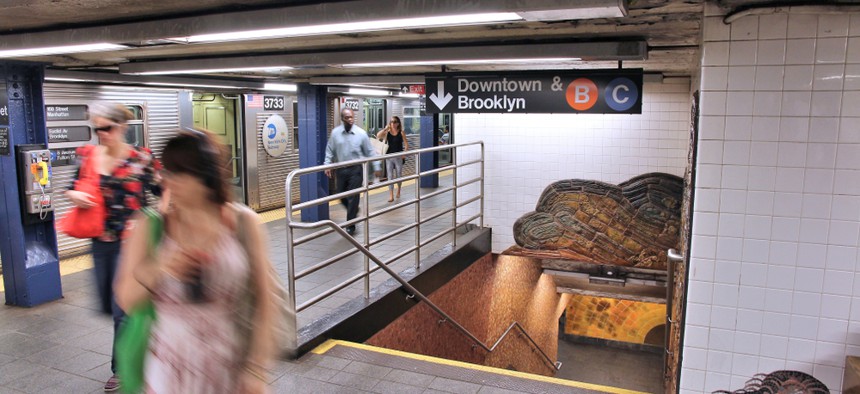Geoffrey S. Berman, President Donald Trump’s recently-appointed United States Attorney for the Southern District of New York, defied expectations that he will hew to his boss’s anti-civil rights agenda, filing suit on Tuesday against the Metropolitan Transportation Authority for allegedly violating the Americans with Disabilities Act.
The complaint argues that the MTA and New York City Transit Authority violated the ADA when they altered the Middletown Road subway station on the number 6 line in the Pelham Bay section of the Bronx. The renovation, which cost $27 million, according to Berman’s office, did not make the station accessible to wheelchairs. The ADA requires public accommodations to be made accessible to people with disabilities when undergoing substantial renovations.
The station has long been a source of contention. Disability rights advocates filed a suit in 2016 alleging that the renovation violates the ADA and demanding the installation of elevators at the station.
Berman’s Tuesday action, in which he joins that ongoing suit, may create an additional headache for New York’s troubled transit authority. The suit also highlights how, nearly three decades after the ADA was signed into law, the MTA’s failure to comply with it is costing the cash-strapped organization federal dollars. “Due to the failure to comply with the ADA, the Federal Transit Administration concluded that it would not provide any funding for the cost of the renovation of the Middletown Road station,” the Office of the U.S. Attorney for the Southern District of New York said in a press release.
“There is no justification for public entities to ignore the requirements of the ADA 28 years after its passage,” said Berman in a statement. “The subway system is a vital part of New York City’s transportation system, and when a subway station undergoes a complete renovation, MTA and NYCTA must comply with its obligations to make such stations accessible to the maximum extent feasible.”
Advocates for transit riders and the disabled applauded Berman’s move, making unlikely allies out of the Republican appointee and liberal Democrats. “The MTA's continued emphasis on style over substance wastes scarce resources, hurts transit riders, and stunts our economy while its failed Enhanced Station Initiative continues to cosmetically renovate stations without improving service or accessibility,” said state Deputy Senate Minority Leader Michael Gianaris from Queens. “It should not take federal legal intervention to force the MTA to do its job, yet here we are. It is past time for the Enhanced Station Initiative to end and for the money to be spent instead on actually fixing our subways."
Berman’s filing also comes at a time when the MTA is under fire for its board approving in February a $250 million “station enhancement” program that will add add upgrade 33 stations but not include such basic features as updating ancient signal systems or providing disability access. In what struck many disabled riders as a particularly callous comment, new NYCTA President Andy Byford dismissed criticism of the station enhancement program as unrealistically “wait[ing] for perfection.”
In response to a query from City & State, MTA spokesman Shams Tarek sent the following statement: “The MTA and NYC Transit are committed to adding and maintaining accessibility for the century-old subway system, and working hard to do so by investing more than a billion dollars over the current five-year capital plan alone. While we can’t comment on specific litigation, the pending civil lawsuit that the US Attorney joined today is nearly two years old and concerns a single station. We are defending the case on the merits.”
The MTA is also known to defend its record on disability access by noting that 118 stations are ADA-accessible and 25 more stations are being made ADA-accessible under funding already approved. But disability rights advocates counter that is still less than one-quarter of the city’s 472 stops and that old transit systems in cities such as Boston and Chicago have achieved much higher rates of accessibility.


